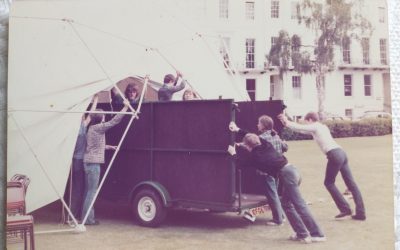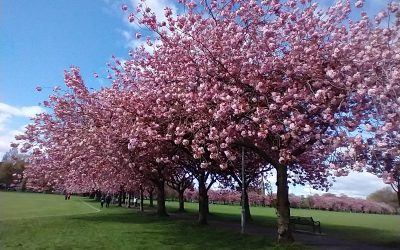 During lockdown I have had plenty of time to practise slowly. Normally, I practise things because I’m getting ready to perform them. But with all concerts cancelled, there was no reason to prepare in the usual way – that is to say, securing things in a way that I knew I could depend on when I was in front of an audience.
During lockdown I have had plenty of time to practise slowly. Normally, I practise things because I’m getting ready to perform them. But with all concerts cancelled, there was no reason to prepare in the usual way – that is to say, securing things in a way that I knew I could depend on when I was in front of an audience.
Suddenly there was no pressure to pass efficiently through the stages of preparation in order to arrive at a result. When you have a concert date in the diary, you obviously need a result by that date. You can’t still be working out how to play things.
It was interesting to be released from that pressure. (This was one of the only good things about the situation). I was able to slow right down and observe my playing with attention. Nobody was going to hear me performing any time soon, so why not take things apart and oil the wheels a bit?
Practising slowly during lockdown brought lots of insights about playing the piano, actually, but here are just a couple of the ‘physical’ ones.
I noticed that I was often physically ‘hanging on’ to individual notes longer than necessary (ie. longer than their written duration). I think many pianists do this as a way of anchoring their hand on the keyboard, but it’s a habit which is nothing to do with the music. When I saw myself hanging on to a note, I let myself release it, and this made the next thing easier.
I’ve noticed before that after stretching an octave, many of us retain the tension of that hand position after the octave has sounded. We play the next notes with our hand in an open ‘stretch’ position it doesn’t need to be in – holding the thumb stiffly away from the rest of the hand, for example.
And I noticed that a hangover of tension from preceding notes often makes one strike the next notes at a tangent. This decreases the amount of control you have over the tone. If you can release the tension, you can arrive at the next note with the hand ‘in neutral’, ready to face the note or chord with an ideal position.
As a teenager I learned percussion and have always remembered the feeling of striking, say, the side drum in an unlucky way – from an angle, or on the wrong part of the drumhead – so that I got a stifled sound instead of a pure ringing tone. There are analogies here with playing the piano.
After practising with slow attention for weeks (16 so far), I can sum up my discoveries in a few words. Your hands need to be in the right place to play each note or chord with optimum balance and comfort. As each hand position ends, leave it behind and move on. Don’t let your hand hold the memory of the previous position like a pillow that retains the shape of your head.
The question is: can these insights be preserved when life resumes its usual tempo? After all, the pressures of normal life cause these bad habits to form in the first place. But if you want to change a habit, you must first learn to pay attention to it, and I have, so I am hopeful.




Absolutely agree with your summing up. I’ve been working ways of decluttering violin technique for the past couple of years and it can be liberating!
As a harpist there is an amazing different in tone following the release of a string. I have never understood the physics behind this but it really is true, and demonstrable even to small children learning their first notes. As each finger and thumb relaxes back into the closed hand the sound is affected by how relaxed and complete the movement is. Therefore when watching someone perform with less than perfect technique it not only affects the fluidity of the piece but the sound it is possible to make on the string. I imagine that actually it must be a similar thing to the action you describe on the piano, like the follow through of a stroke playing tennis.
I have been learning a piece I have always liked but is pretty difficult. I have had no option to learn it very slowly since my brain just couldn’t master the complexity in anything like the correct tempo. Sixteen weeks later much to my delight and amazement I can not only play it up to tempo, but I know my technique has not been compromised by getting round the notes. I think previously I just wouldn’t have the patience to keep on at it since it has taken so long, but having watched a fellow student play the same piece at a masterclass with her fingers bleeding I can testify that a slower approach generally has been very beneficial!
Greetings from an amateur pianist (retired doctor)
This is really interesting. You do have the knack of getting to the heart of so many issues.
What you say reminds me of Neuhaus’ book where he says you only hit the key when the finger is covering it. I think Cherkassky said the same about his practice technique.
We amateurs waste time by not being disciplined! But there is a ‘happy medium’
Thank you Michael – I had never heard that Neuhaus quote, but how interesting! Yes, if the finger is covering the note I suppose that would guarantee that the finger was not approaching the key from an awkward tangent. Thank you for drawing my attention to this.